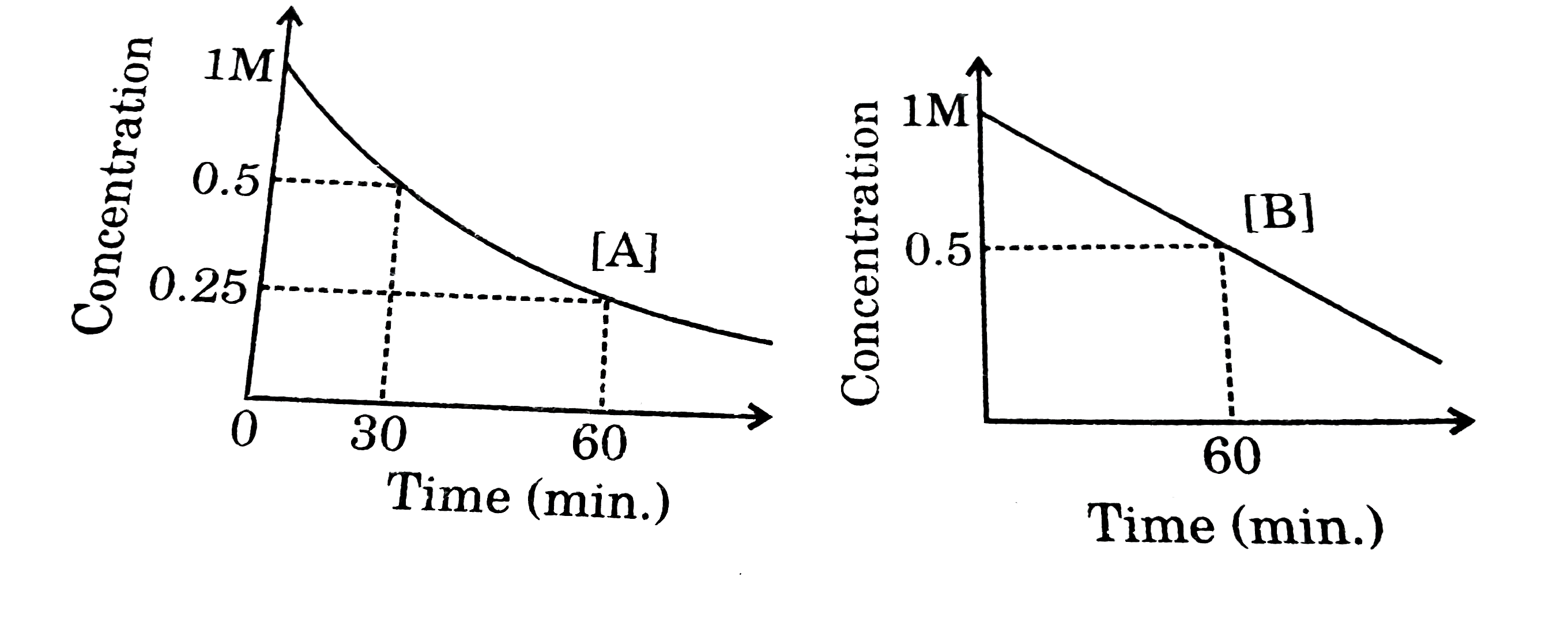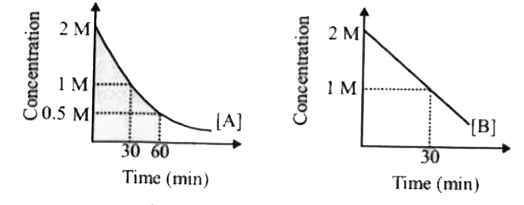For the reaction
(i) AkI−−→P
(ii) BKII−−→Q, following observation is made.

Calculate k1kII, where kI and kII and rate constant for the respective reaction.
a) 2.303
b) 1
c) 0.36
d) 0.693Solution in Punjabi
2.303
1
0.36
0.693
The correct Answer is:D
Step by step video & image solution for For the reaction (i) Aoverset(k_(I))toP (ii) Boverset(K_(II))toQ, following observation is made. Calculate (k_(1))/(k_(II)), where k_(I) and k_(II) and rate constant for the respective reaction. a) 2.303 b) 1 c) 0.36 d) 0.693 by Chemistry experts to help you in doubts & scoring excellent marks in Class 12 exams.
Topper's Solved these Questions
- BOOK - NARENDRA AWASTHICHAPTER - CHEMICAL KINETIC & NUCLEAR CHEMISTRYEXERCISE - Level 1 (Q.3 To Q.32)1videos
CHEMICAL KINETIC & NUCLEAR CHEMISTRY
- BOOK - NARENDRA AWASTHICHAPTER - CHEMICAL KINETIC & NUCLEAR CHEMISTRYEXERCISE - Level 1 (Q.33 To Q.62)2videos
CHEMICAL KINETIC & NUCLEAR CHEMISTRY
- BOOK - NARENDRA AWASTHICHAPTER - SURFACE CHEMISTRYEXERCISE - Level -21videos
SURFACE CHEMISTRY
Similar Questions
The following data pertain to reaction between A and B
S.No[A][B]RatemolL−1molL−1molL−1sec−1I1×10−22×10−22×10−4II2×10−22×10−24×10−4III2×10−24×10−28×10−4
Which of the following interference(s) can be drawn from the above data
(a) Rate constatnt of the reaction 10−4
(b) Rate law of reaction is k[A][B]
(c ) Rate of reaction increases four times on doubling the concentration of both the reactant Select the correct answer codes:
a) a,b and C
b) a and b
c) b and c
d) c alone02:59View Solutioncolumn Icolumn IIP.Zero order reaction1.t1/2α1[A]0Q.First order reaction2.t100%=[A]0/kR.second order reactions3.Involves at least two reactantsS.Pseudo unimolecular reaction4.[A]=[A]0e−kt
06:20View Solutionfor the graph below, select correct order of temperture ?
 View Solution
View SolutionConisder the following reactions:
I. A+Bk1⇐⇒k−1C
II. C+Bk2−−→D
Then k1[A][B]−k−1[C]−k2[C][B] is equal to04:35View SolutionFor the reaction (i) Aoverset(k_(I))toP (ii) Boverset(K_(II))toQ , following observation is made. Calculate (k_(1))/(k_(II)) , where k_(I) and k_(II) and rate constant for the respective reaction.
02:35View SolutionIn the series reaction Aoverset(K_(2))(rarr)Boverset(K_(2))(rarr)Coverset(K_(2))(rarr)D , if K_(1)gtK_(2)gtK_(3) then the rate determing step of the reaction is
03:10View SolutionFor the reactions (i) AKI−−→P and (ii) BKII−−→Q, following observation is made.

Calculate KIKII where KI and KII are rate constants for the respective reaction.03:01View SolutionConsider the following hypothetical reactions
Ak1⇐⇒k2B , Bk3−−→slowC
The overall rate constant kθ of the reaction is02:52View Solutionअभिक्रिया भागफल (Q ) तथा साम्य सिथरांक (Kc) में निम्नलिखित सम्बन्ध है, तो अभिक्रिया की दिशा का निर्धारण कीजिये।
(i) Q<Kc, (ii) Q>Kc, (iii) Q=KcView SolutionGiven
i)A↔B+CKeq(1)<br>ii)B+C↔PKeq(2)
then Keq for reaction A↔pisView SolutionIn the sequence of reaction
AK1−−→BK2−−→CKc−−→D,K3>K2>K1 then the rate determining step of the reaction isView Solution(i) Derive a general expression for the equilibrium constant Kp, and Kc for the reaction.
(ii) Write the Kp and KC for NH3 formation reaction.View SolutionIf a unimolecular reaction, A(g) to Products, takes place according to the mechanism (I) A+Aoverset(k_(1))underset(k_(-1))(hArr)A^(a)+A (II) A^(a)underset(k_(2))(to)P where k_(1) , k_(-1) and k_(2) are the rate constants and P, A and A^(a) stand for product molecule, normal molecule of reactant and activated molecules of reactant and activated molecules of reactant respectively. For the reaction scheme, X+Yoverset(k_(f))underset(k_(b))(hArr)Z , Y+Zoverset(k)(to)T , the rate equation for the formation of T will be
01:49View SolutionIf a unimolecular reaction, A(g)→ Products, takes place according to the mechanism
(I)A+Ak1⇐===⇒k−1Aa+A
(II)Aa−−→k2P
where k1, k−1 and k2 are the rate constants and P,A and Aa stand for product molecule, normal molecule of reactant and activated molecules of reactant and activated molecules of reactant respectively.
The order 'n' initial concentration a0 and time of half reaction t1/2, for a reaction are related as02:49View SolutionFor the reaction
(i) Ak1−−→P
(ii) BkII−−→Q, following observation is made.

Calculate kIkII, where kI and kII are rate constant for the respective reaction.View SolutionIn the series reaction
AK2−−→BK2−−→CK2−−→D , if K1>K2>K3 then the rate determing step of the reaction is02:40View Solution

